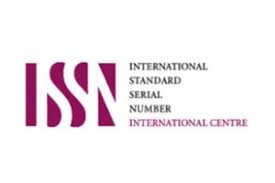A genre-based rubric for assessing higher-order thinking skills in student essay writing
DOI:
https://doi.org/10.47577/ijitss.v4i.145Keywords:
Higher-Order Thinking Skills (HOTS), Genre-Based Assessment, Essay Writing Rubric, Bloom's Revised Taxonomy, Writing Pedagogy, Critical and Analytical ThinkingAbstract
Higher-order thinking Skills (HOTS) play a crucial role in modern education, yet existing writing assessment tools often fail to adequately evaluate students' cognitive depth. This study addresses this gap by developing a genre-based rubric that integrates HOTS—analysis, evaluation, and creativity—into the assessment of student essay writing across four distinct genres: story, review, article, and report writing. Grounded in Bloom's Revised Taxonomy and genre-based writing theories, the rubric was systematically designed, validated by expert reviewers, and pilot-tested with students and educators. The research employed a design-based approach, incorporating quantitative measures such as inter-rater reliability (Cohen's Kappa = 0.85) and qualitative thematic analysis to refine the rubric's descriptors and applicability. Findings indicate that the rubric enhances assessment accuracy, providing educators with a structured yet adaptable tool to evaluate HOTS across different writing genres. This study contributes to writing pedagogy by bridging the gap between traditional assessment methods and the cognitive demands of 21st-century education, ultimately fostering analytical, evaluating, and creative thinking in student writing.
Downloads
Downloads
Published
How to Cite
Issue
Section
License
Copyright (c) 2024 Vanhitha Kernagaran, Amelia Abdullah

This work is licensed under a Creative Commons Attribution-NonCommercial-NoDerivatives 4.0 International License.
All Right Reserved. Copyright © 2020
All articles are published under the terms of the Creative Commons Attribution License (CC-BY). This license permits unrestricted use, distribution, and reproduction provided that the authors, citation details and publisher are clearly identified. For any reuse or distribution, users must make clear that the article is made available under a Creative Commons Attribution license.
If an article is accepted for publication in IJITSS journal, authors will be asked to submit a copyright form through the Open Journal System. Copyright Transfer Form. This transfer will ensure the widest possible dissemination of information. A notification will be sent to the corresponding Author confirming receipt of the manuscript. It is the author's responsibility to ensure that his or her submitted work does not infringe any existing copyright. Authors should obtain permission to reproduce or adapt copyrighted material and provide evidence of approval upon submitting the final version of a manuscript.












